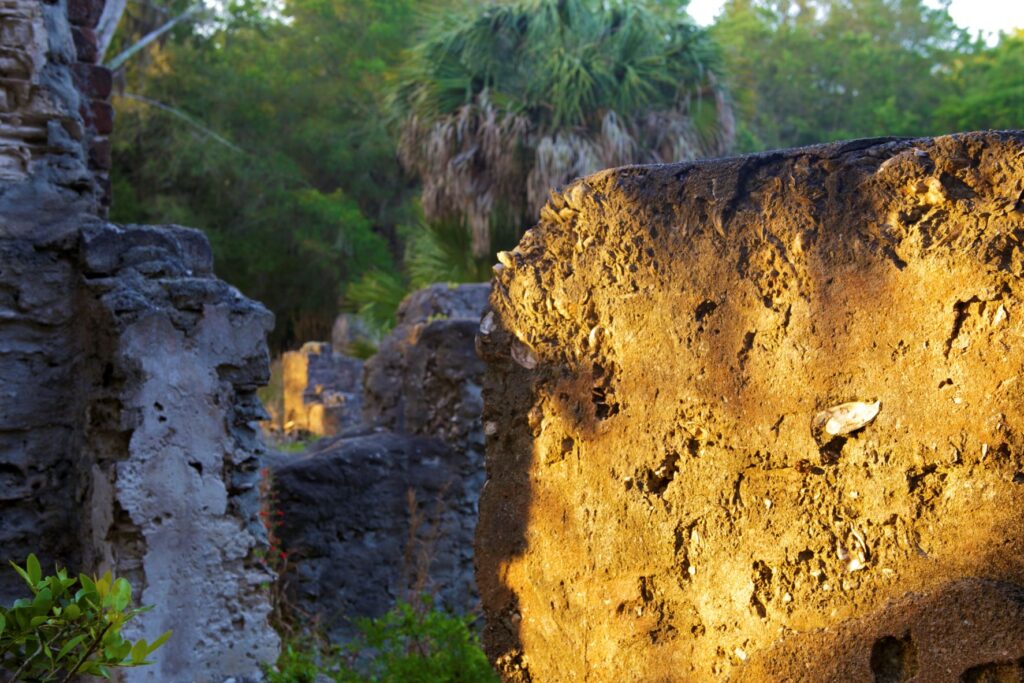

When your hike or bike ride reaches the northern tip of the peninsula at Cannon’s Point Preserve, you are rewarded with grand live oaks, an undisturbed view across the Altamaha River delta looking all the way to Sapelo Island, and of course the tabby ruins left behind from John Couper’s Sea Island cotton plantation. In some ways, it feels like you are a world away from the parking area and Georgia-Pacific Education Pavilion where your journey began.
As you walk around this northern area, you can read the interpretive signs discussing the layout of the plantation house, the stabilized chimney comprised of tabby brick, and other information about the site. In addition to the interpretive signs, the ruins themselves tell a story. While standing outside of the fencing, you have the unique ability for a close look at these ruins which are roughly 220 years old. Tabby can be loosely referred to as “historic concrete,” and many of the construction techniques are still used today in masonry. Tabby is created using a mixture of lime (derived from burnt shells), sand, oyster and other seashells, and fresh water. During the 1700s through the mid-1800s this was one of the primary building materials due to the amount of local shell available along the Georgia coast.
When looking at the foundation walls of the plantation house you can see that the craftsmanship and skill of the enslaved people who built them was extraordinary. As the years pass, we are now able to see the layers of the walls and the process that was involved during their construction. To build the wall, wooden forms were created, and the mixed tabby was poured into these forms to dry. Before the first layer dried completely, the next form was placed on top of it to receive a second layer. This process continued until the desired height was reached. Once the poured tabby wall was completed, the next step was adding what today would be called the scratch coat and for fairly obvious reason. The scratch coat is lime-based mortar which can be seen on the pillars with hash marks or scratches throughout it. The scratch coat allowed for the next layer, a lime-based whitecoat (similar to stucco), to adhere securely. The lime-based whitecoat had crushed shell added to it which produced a slight shimmer effect in the island sunshine. This final coat would be maintained with whitewash in an effort to keep it as white and gleaming as possible during the life of the plantation.
While we don’t see the plantation ruins in their original state, they continue to serve as an important symbol of our history. What remains today shows us the skilled hands and strength of the many who were enslaved, the ingenuity of engineering, and the clear reminder that time generates change. The Land Trust is grateful to our members, volunteers, and partners who have helped us protect these unique and fragile structures and share them with the public. Please remember during your visit that for the safety of the structures and visitors alike, to remain outside of the fencing — for the safest viewing and to preserve these fragile structures. Take only pictures, leave only footprints.
